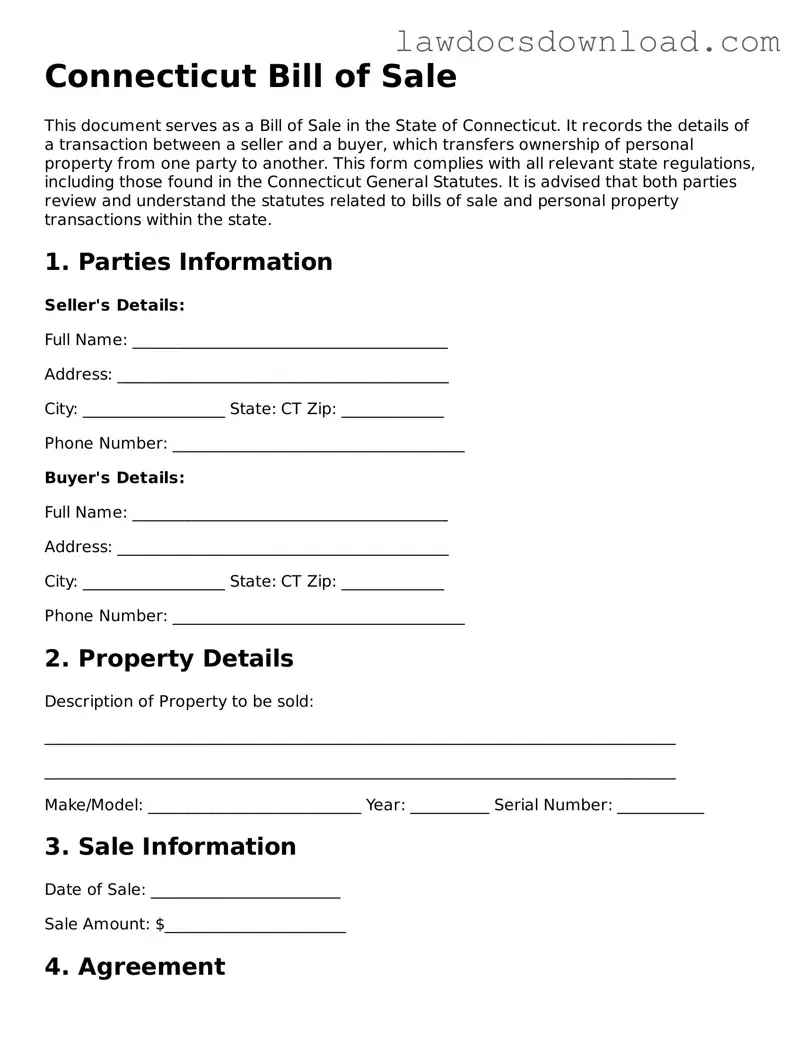Connecticut Bill of Sale
This document serves as a Bill of Sale in the State of Connecticut. It records the details of a transaction between a seller and a buyer, which transfers ownership of personal property from one party to another. This form complies with all relevant state regulations, including those found in the Connecticut General Statutes. It is advised that both parties review and understand the statutes related to bills of sale and personal property transactions within the state.
1. Parties Information
Seller's Details:
Full Name: ________________________________________
Address: __________________________________________
City: __________________ State: CT Zip: _____________
Phone Number: _____________________________________
Buyer's Details:
Full Name: ________________________________________
Address: __________________________________________
City: __________________ State: CT Zip: _____________
Phone Number: _____________________________________
2. Property Details
Description of Property to be sold:
________________________________________________________________________________
________________________________________________________________________________
Make/Model: ___________________________ Year: __________ Serial Number: ___________
3. Sale Information
Date of Sale: ________________________
Sale Amount: $_______________________
4. Agreement
The undersigned seller affirms that the information provided about the above-described property is true to the best of their knowledge, that the property is being sold "as is", and that they have the lawful right to sell this property. The buyer accepts the property "as is", assuming all responsibilities related to the property upon purchase. This document does not certify or validate that the seller has legal ownership of the property described; it only records the transaction between the buyer and seller.
5. Signatures
This document is not legally binding without the signatures of both the seller and the buyer. By signing, both parties agree to the terms as described above.
Seller's Signature: ___________________________ Date: _______________
Buyer's Signature: ___________________________ Date: _______________
This template provides a basic structure for a Bill of Sale in Connecticut. However, it’s important for both parties to consult with a legal professional to ensure that this document meets all legal requirements for the specific type of property being sold and the particulars of the transaction.
